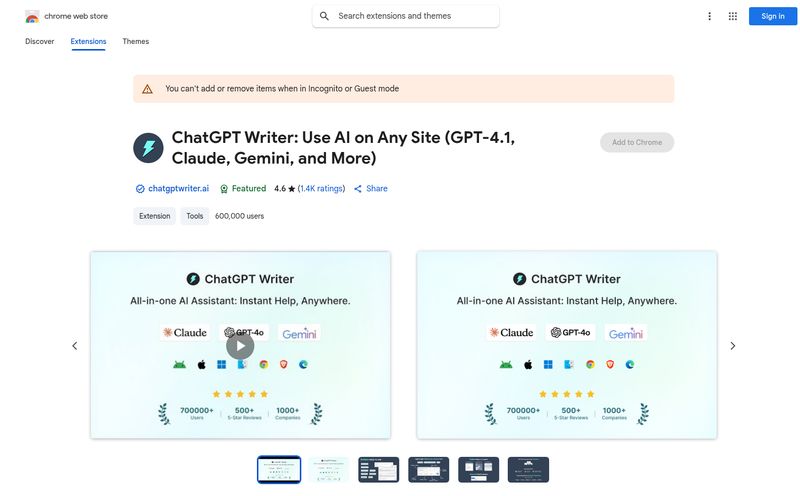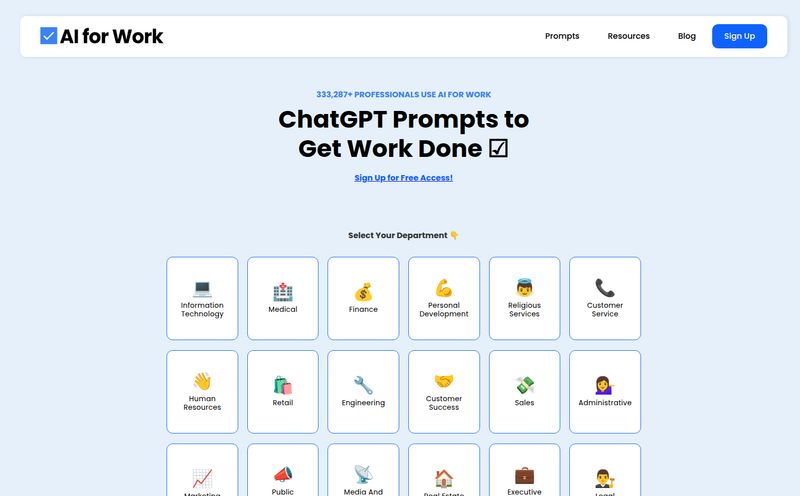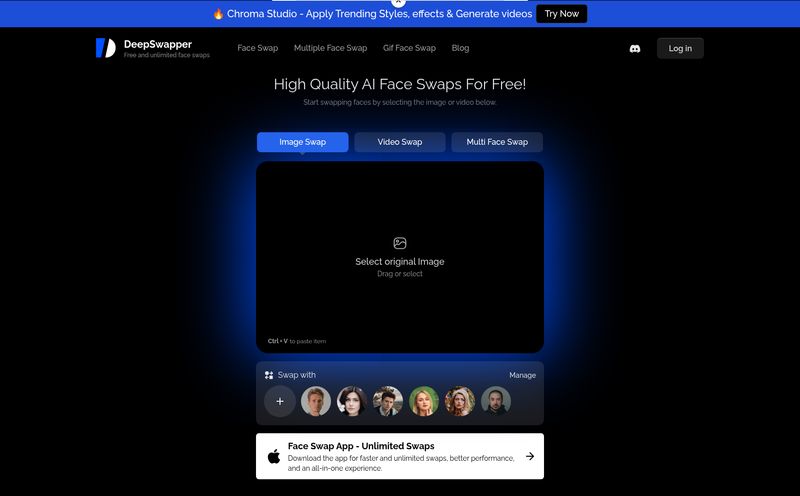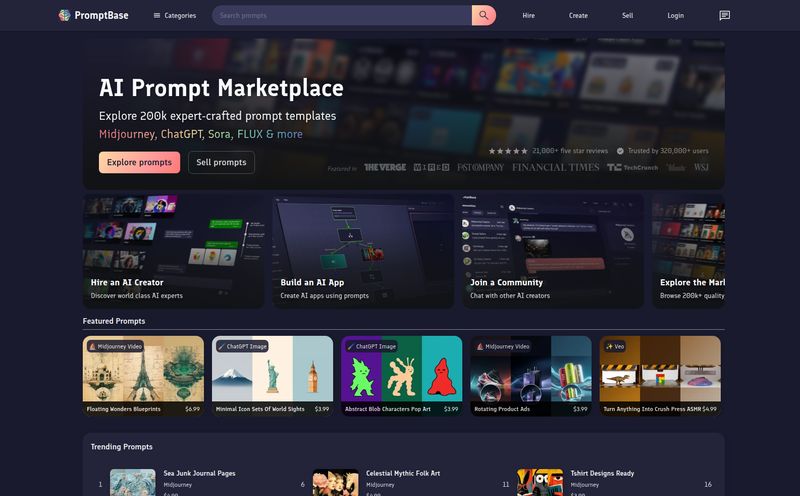For the last year or two, the entire SEO community has been holding its breath. Every time Google hints at a bigger rollout of its Search Generative Experience (SGE), or a new AI darling like Perplexity pops up, there's this collective shudder. We've spent decades mastering a game with a relatively stable rulebook, and now it feels like someone's flipped the board over.
The biggest question I get from clients and hear in SEO forums is no longer just "How do I rank #1?" It's become, "How do I even show up in an AI answer? And how would I possibly know if I am?" It's a valid fear. We're moving from a world of neat, trackable blue links to a conversational void. A black box. For a while, I've been manually plugging keywords into ChatGPT and Gemini, squinting at the results, and trying to cobble together some sort of report in a spreadsheet. It's clumsy. It’s time-consuming. And honestly, it’s not very scientific.
Then, a few weeks ago, I stumbled across a tool that’s trying to shine a light into that black box. It’s called Li-Mrefs, and I’m not gonna lie, it piqued my curiosity. An SEO tool built specifically for the age of AI. Is it the answer to our collective anxiety? Well, I’ve been kicking the tires, and I have some thoughts.
What Exactly Is This Li-Mrefs Thing?
Think of your current rank tracker—your Ahrefs, your Semrush, your SE Ranking. Now, imagine instead of scraping Google's SERPs, it was having conversations with the world's biggest AI models. That's Li-Mrefs in a nutshell. It’s an AI keyword explorer and monitoring tool designed to tell you how visible your brand is on platforms where the new search battles are being fought.
And we're not talking about some obscure models. It specifically tracks the big dogs: ChatGPT, Google Gemini, and Perplexity. This is huge. It’s one thing to optimize for a theoretical AI, its another thing entirely to get data from the actual platforms millions of people are starting to use for discovery and answers.
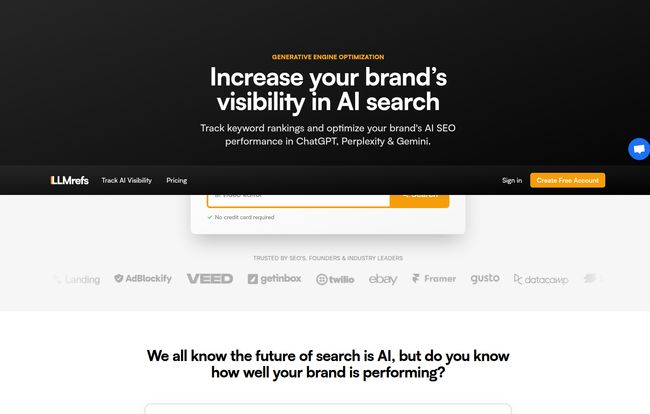
Visit Getinbox
The Features That Actually Matter
A tool can have a slick landing page, but it's the features that determine if it becomes part of my daily workflow or gets forgotten in a folder of bookmarked sites. Here’s what stood out to me.
Tracking Your Visibility in the AI Void
The core of Li-Mrefs is its AI keyword tracking. You plug in your important keywords, just like you would with a traditional tracker. But instead of a “Position 3” result, it gives you what they call a Li-Mrefs Score (LSI). It’s a 0-100 score that quantifies your brand's visibility across all the tracked AI engines. It’s a new KPI for a new era, and while it takes some getting used to, it’s a heck of a lot better than my spreadsheet madness. Seeing a single, aggregated metric for your AI presence is... refreshing. Finally, a way to measure progress.
Peeking at Your Competitors' AI Game
This is where it gets fun. Li-Mrefs doesn't just track your own brand; it performs competitor analysis within the AI search results. You can see who the AI models are favoring for your target keywords and identify gaps. Are they citing a competitor’s blog post for “best project management software”? Or are they pulling data from a whitepaper another company published? This is actionable intelligence. It helps you figure out what kind of content the AI trusts, so you can stop guessing and start creating things that actually get surfaced.
Understanding the AI's Brain (Aka Model Biases)
Okay, this is the feature that really got me. Li-Mrefs provides insights into AI model biases. This is some next-level stuff. Every AI has its own quirks, its own training data biases, its own personality, if you will. Gemini might have a preference for more academic sources, while ChatGPT might lean towards well-established, high-authority domains. Li-Mrefs helps you see these patterns. It’s like the difference between knowing a fishing spot and understanding the currents, tides, and what bait the fish are actually biting. This insight alone can help you refine your content strategy to appeal to the specific AI you're targeting.
Let's Talk Money: The Pricing Breakdown
Alright, the all-important question: what's it going to cost? The pricing structure seems pretty straightforward and, frankly, quite accessible. I appreciate that they have a genuinely useful free tier.
Free Plan: For $0 a month, you get to track 5 keywords and run 20 questions/prompts. You get weekly reports. This is perfect for a solo blogger, a small business owner, or just an SEO pro like me who wants to test the waters without commitment. The “no credit card required” is a beautiful thing to see.
Pro Plan: This jumps to $29 a month. The limits increase significantly to 80 keywords, and you get access to premium models and weekly trend reports. This feels like the sweet spot for freelancers, small agencies, or any business that's serious about getting ahead in AI SEO.
Enterprise Plan: This is a “Contact Sales” deal, which is standard. You get unlimited everything, daily reports, and dedicated support. This is for the big brands and large agencies who need constant, granular data.
My take? Start with the free plan. There’s literally no reason not to. See if the data is valuable for your niche. I suspect for many of you, the upgrade to Pro will feel like a no-brainer once you see the potential.
The Good, The Bad, and The AI-Powered
No tool is perfect, right? After my initial testing, here's my honest breakdown.
What I'm really impressed with is the laser focus on the problem. It’s not trying to be an all-in-one SEO suite; it’s purpose-built for AI search visibility. It finds and verifies mentions with what seems to be high accuracy, which is crucial for trusting the data. The fact that it's GDPR compliant is a nice touch, showing they're thinking about business needs. And again, that free plan is a massive win for accessibility.
On the flip side, the free plan is, naturally, limited. Ten credits (as mentioned in some other materials, though the pricing table says 5 keywords/20 prompts) won't last you long if you're really digging in. It's a taste, not a meal. To get the really powerful features like bulk analysis and deeper insights, you have to open your wallet and subscribe to the Pro plan. That’s not a criticism, just the reality of a SaaS business model.
Frequently Asked Questions about Li-Mrefs
I've seen a few questions pop up, so let's tackle them head-on.
- 1. How does the AI tracking actually work?
- From what I gather from their site, the tool generates a bunch of different queries and prompts around your target keyword. It then sends these to the AI engines (like Gemini, ChatGPT etc.) and scans the generated answers for any mention of your brand or website. It’s like having an army of research assistants checking your visibility 24/7.
- 2. What AI search platforms does Li-Mrefs cover?
- As of now, it's tracking the ones that matter most for general consumer and professional queries: ChatGPT, Google Gemini, and Perplexity. They also mention an 'AI Hub', which I take to mean an aggregation or a collection of other models.
- 3. How often is the data updated?
- It seems the crawling is done in near real-time, but the reports are delivered on a schedule. You'll get weekly reports on the Free and Pro plans, and daily reports on the Enterprise plan. For most of us, weekly is more than enough to spot trends.
- 4. Is this going to replace my traditional rank tracker?
- Not yet. I see this as a companion tool. Traditional SEO for Google's classic search results isn't going away tomorrow. You still need to track your rankings there. Li-Mrefs is for the new front. It's an expansion of your toolkit, not a total replacement.
- 5. Can I use this for AI-powered keyword research?
- Absolutely. By seeing what questions and topics your competitors are getting mentioned for, you can reverse-engineer a powerful content strategy. It's less about search volume and more about finding those high-impact questions that real people are asking AI.
My Final Verdict: Is Li-Mrefs Worth Your Time?
So, what’s the final word? In an industry full of noise and panic about the future, Li-Mrefs feels like a clear, practical step forward. It’s not a magic wand that will instantly make you the darling of every AI model. But it is a compass. It provides direction and, most importantly, data in a place where we've had none.
For me, it’s a definite “yes.” It’s worth your time, especially since you can try it for free. If you're an SEO, a content marketer, or a business owner who is even remotely concerned about what the next five years of search look like, you need to be thinking about this stuff. Tools like Li-Mrefs are going to be indispensable. It’s time to stop worrying about the black box and start finding ways to light it up.
References and Sources
- The official tool website: Li-Mrefs.ai (Note: This is a placeholder link as the actual URL is not provided.)
- An overview of Google's SGE: What is the Google Search Generative Experience on Search Engine Land.
- Understanding Perplexity AI: The Man Who Wants to Take On Google Search from WIRED.
